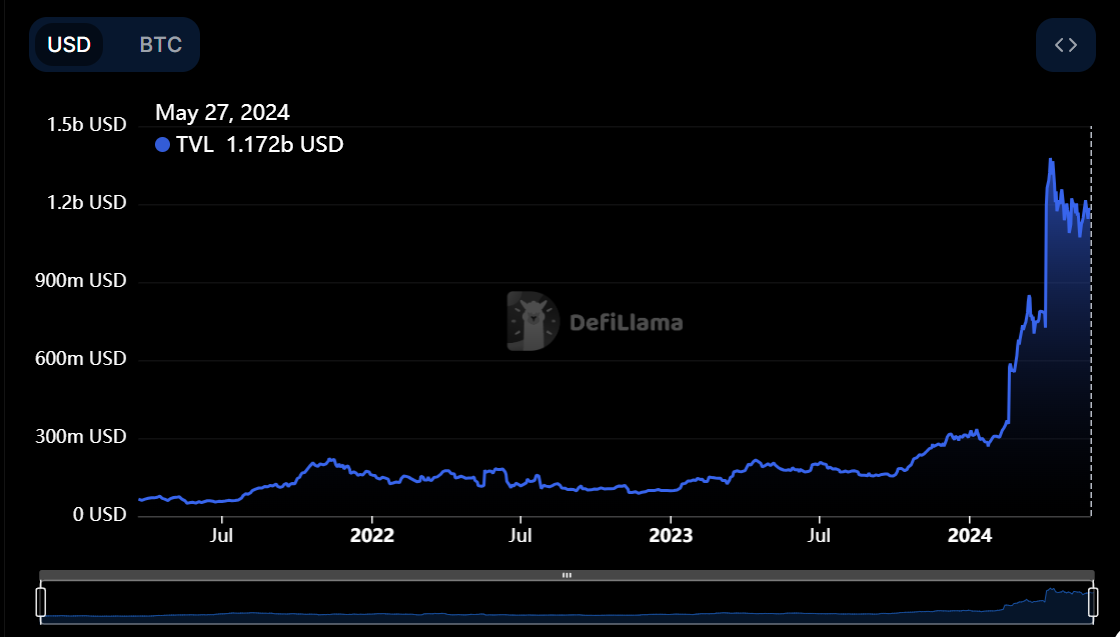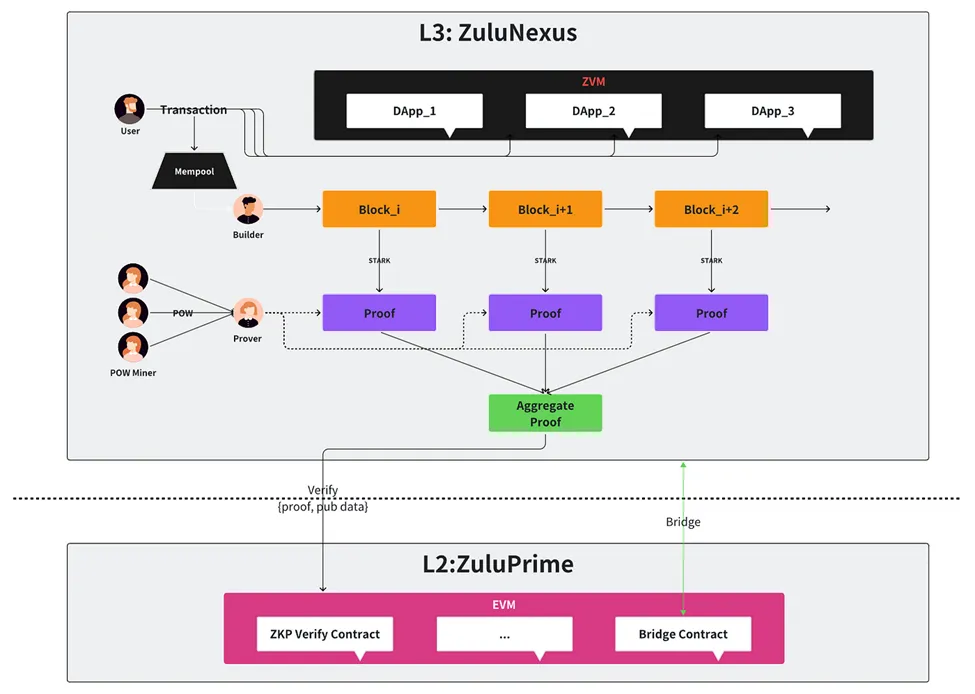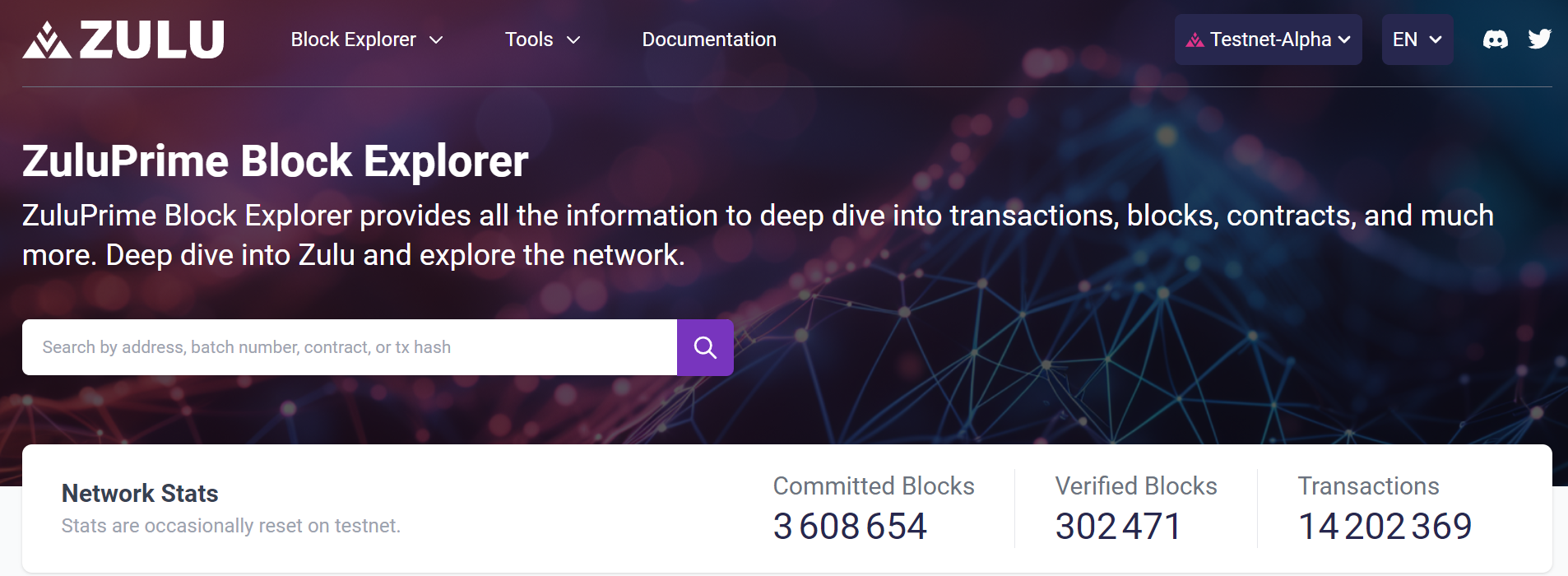Let's talk about ZuluNexus's exploration of UTXO and why it is expected to become a strong engine for the future ecosystem of Bitcoin
Author: Zulu Network
Bitcoin, as the first successful cryptocurrency, has sparked an unprecedented revolution over the past decade. Its characteristics of decentralization, transparency, and security have had a profound impact on the entire financial industry. However, as the Bitcoin network continues to grow, its original single-layer architecture has begun to reveal some pain points that restrict its development, such as slow transaction speeds, network congestion, and poor scalability. These bottleneck issues urgently need effective solutions to promote the sustainable and healthy development of the Bitcoin network. In recent years, many innovative solutions have emerged to address these challenges, among which the dual-layer architecture solution pioneered by Zulu Network has attracted significant attention due to its unique design and potential advantages.
Zulu Network creatively launched the first innovative solution based on a dual-layer architecture, aimed at addressing the key challenges currently faced by the Bitcoin network. This solution introduces an intermediate layer that separates transaction processing from the main chain, significantly improving transaction throughput and confirmation speed while maintaining the decentralization and security of the Bitcoin mainnet. This solution has garnered widespread attention in the industry and is expected to become an important engine for building the future ecosystem of Bitcoin.
Optimizing Bitcoin Network's Scalability Challenges Has Become Urgent
It is well known that the Bitcoin network is a decentralized system based on blockchain technology, with its core being the distributed ledger that records all transactions. Although this design ensures the security and transparency of the network, it also brings scalability issues. The current transaction processing speed of the Bitcoin network is about 7 transactions per second (TPS), which is not only lower than other mainstream blockchain networks but also far below traditional payment systems like Visa, which can handle thousands of TPS.
The lack of scalability has led to several prominent issues:
- Transaction congestion: As the number of Bitcoin users increases, transaction requests often exceed the network's processing capacity, resulting in delayed transaction confirmations and rising fees.
- Block size limitations: The size of Bitcoin blocks is limited to 1MB, which severely affects the network's transaction processing capacity.
- Balancing decentralization and security: Increasing block size or reducing block time intervals can improve transaction processing capacity but may also sacrifice the network's decentralization and security.
- Limited functionality: As a decentralized public chain, the Bitcoin mainnet primarily supports basic currency transactions and transfers, which cannot meet the demands for more complex financial services. This limits Bitcoin's expansion space in emerging application areas.
To solve these problems and open up a broader stage for the construction of the Bitcoin ecosystem, there are no shortcuts; it inevitably requires a difficult exploration of improving infrastructure filled with unknowns and challenges, a path already trodden by many brave pioneers.
What Solutions Have Entrepreneurs Brought?
Here, we will first look at a few representative Bitcoin Layer 2 projects. For instance, the recently spotlighted Merlin Chain, which focuses on compatibility with the Ethereum Virtual Machine (EVM) to achieve efficient interaction with decentralized applications based on Ethereum; another example is Dovi, which is also an EVM-compatible Bitcoin Layer 2 aimed at enhancing scalability, reducing costs, and promoting a more secure and decentralized financial ecosystem. It supports multiple asset types, including BRC20 and ARC20 tokens, enabling fast and secure cross-chain asset transfers. Additionally, there is a ZKM project that allows for the sharing of native assets without adding extra security assumptions. By combining zero-knowledge proofs and MIPS architecture, it achieves efficient computation while protecting privacy.
Even with these distinctive competitors, the highlights of Zulu Network's dual-layer architecture solution remain undeniable. To better understand the innovation of Zulu Network's pioneering dual-layer architecture, we first need to understand its two main functions, ZuluPrime and ZuluNexus, as well as Bitcoin's UTXO model.
First, let's talk about ZuluPrime, which is an EVM-compatible Layer 2 platform, similar to the aforementioned Merlin Chain and Dovi. It aims to establish a new BitFi (Bitcoin DeFi) ecosystem within the Bitcoin network through smart contracts and decentralized applications. ZuluPrime can be seen as Zulu Network's entry ticket into the Bitcoin Layer 2 arena. The real game-changer for Zulu Network, however, is ZuluNexus, a Layer 3 platform that integrates UTXO scalability and focuses on innovation within the original Bitcoin ecosystem and native assets.
Is integrating UTXO scalability important? Absolutely. Bitcoin's development over the past decade can be said to be both a success and a limitation of UTXO. On one hand, the simplicity and consistency of the UTXO data model have quickly gained global recognition; on the other hand, the UTXO model has often limited Bitcoin's ability to deploy smart contracts as quickly and freely as Ethereum, thus affecting the further development of the Bitcoin ecosystem. It wasn't until the rise of inscriptions and runes, along with their deep exploration of Bitcoin's UTXO, that we began to see the potential for asset deployment based on UTXO.
Therefore, from this perspective, ZuluNexus's exploration of UTXO is of profound significance.
ZuluNexus, Diving into UTXO to Explore a Trillion-Dollar Market
Before introducing ZuluNexus, let's first look at some data. As of May 27, 2024, the total value locked (TVL) in the Ethereum ecosystem is $66.9 billion, peaking at over $100 billion at one point. In contrast, the current TVL in the Bitcoin ecosystem is only $1.17 billion, and even at its highest value of $1.3 billion, it is still less than 2% of Ethereum's TVL.

This comparison not only highlights the gap between the two but also reveals the immense potential of the Bitcoin ecosystem. As one of Zulu Network's key products, ZuluNexus aims to combine the reliability of UTXO with the flexibility of smart contracts and dApps, making the dream of a fully programmable Bitcoin ecosystem a reality. In short, by introducing BRC20 and other Ethereum-like token standards, along with the imagination unlocked by BitVM, we are refreshing our understanding of UTXO. With the emergence of Bitcoin's native DeFi and new paradigms, the UTXO model stands on the brink of a new era, poised to reshape the landscape of Bitcoin's native DeFi finance through its inherent security and the efficiency enhancement solutions brought by ZuluNexus. By blending programmability, scalability, and a mix of UTXO and account types, Zulu not only expands Bitcoin's functionality but also redefines it.

As shown in the figure above, ZuluPrime lays the foundation for the BitFi ecosystem through its EVM compatibility, while ZuluNexus integrates UTXO scalability, focusing on core innovations within the Bitcoin ecosystem. This is the greatness of Zulu Network.
As Steve Chiu, founder of CGV, stated, "The innovative dual-layer network structure of Zulu Network in the Bitcoin ecosystem not only provides users with more stable and innovative services but also offers tremendous value and potential for BitFi applications."
The endeavor promoted by Zulu Network not only bridges the gap between Bitcoin's inherent security and the pursuit of convenience and efficiency in the DeFi world but also significantly propels Bitcoin beyond its traditional boundaries, transforming it from a mere cryptocurrency into a stage for limitless innovation.
Zulu Network Has a Long Way to Go, but the Future is Bright
Looking back at the relatively short development history of the blockchain world, we can find that the construction of infrastructure is often arduous and slow. However, once the infrastructure is gradually improved, the application layer that thrives on this foundation will repeatedly usher in new vitality like bamboo shoots after a rain. This has been validated in many mainstream infrastructure projects such as Ethereum, Solana, and Cosmos, and it will undoubtedly become an important guide for Bitcoin to enter the next era. This process will also be filled with hardships and will not be smooth sailing, which means that the Zulu team will face more unknown challenges and must continue to uphold the belief in bold innovation and relentless progress.

An exciting piece of news is that Zulu Network's testnet has been online for over a month and has already attracted nearly a million users, successfully processing over 14 million transactions. Such high transaction efficiency and development speed make us look forward to more good news from the Zulu team.

About Zulu Network
Zulu Network is the first Bitcoin Layer 2 with a dual-layer architecture. ZuluPrime is EVM-compatible for scaling and BitFi; ZuluNexus provides UTXO programmability, a unique solution that continuously supports Bitcoin's native innovations (cheaper, faster, scalable, and programmable).









